Preserving Cannabis Flowers: Techniques for Migraine Relief and Moisture Retention
Drying out of cannabis flower, especially for medical purposes like treating migraines, is a common…….
Migraines, a complex and debilitating condition affecting millions globally, have long been a subject of medical research seeking effective treatments. In recent years, an alternative approach has gained significant attention—the use of cannabis strains specifically tailored to alleviate migraine symptoms. This article delves into the world of cannabis as a potential remedy for migraines, exploring its mechanisms, global impact, economic implications, technological innovations, regulatory landscape, and the challenges it faces. By providing a detailed analysis, we aim to offer readers a comprehensive understanding of this emerging field, highlighting its promise and potential pitfalls.
Definition: Cannabis strains for migraines refer to specific varieties or blends of cannabis plants (Cannabis sativa L.) cultivated or modified to contain elevated levels of certain cannabinoids, such as tetrahydrocannabinol (THC) and cannabidiol (CBD), known for their potential therapeutic effects on migraine headaches. These strains are designed to provide relief by interacting with the body’s endocannabinoid system (ECS), a complex signaling network involved in regulating various physiological processes, including pain perception.
Core Components:
Cannabinoids: THC and CBD are the primary cannabinoids associated with migraine relief. THC, known for its psychoactive properties, can modulate pain signals and reduce inflammation. On the other hand, CBD, non-intoxicating, exhibits anti-inflammatory and neuroprotective effects, potentially preventing migraine attacks.
Terpenes: These aromatic compounds contribute to the unique flavor profiles of cannabis strains. Certain terpenes like myrcene and linalool have been linked to reduced anxiety and improved sleep quality, which are often co-morbid with migraines. They also enhance the overall therapeutic experience by interacting synergistically with cannabinoids.
Phytochemicals: Cannabis plants contain various phytochemicals, including flavonoids and phenolic acids, which possess antioxidant properties. These compounds may play a role in reducing inflammation associated with migraines.
Historical Context: The use of cannabis for medicinal purposes dates back thousands of years, with ancient civilizations recognizing its pain-relieving and anti-inflammatory properties. However, modern research into cannabis for migraines gained momentum in the late 20th century when scientists began to understand the ECS and its role in regulating pain. Early studies suggested that cannabinoids could interact with the ECS to reduce pain perception, leading to a surge of interest in their potential for treating migraines.
Significance: Migraines remain a significant public health concern, affecting approximately 1 in 7 people worldwide (1). Traditional treatments often involve pharmaceutical drugs with potential side effects and limited efficacy for some patients. Cannabis strains offer an alternative approach by providing a natural, plant-based therapy with a promising safety profile and anecdotal evidence of success.
The global impact of cannabis strains for migraines is significant, with increasing interest and research across multiple regions:
| Region | Key Trends | Notable Developments |
|---|---|---|
| North America | Leading the way in cannabis research, the US and Canada have seen a surge in clinical trials exploring cannabis as a migraine treatment. | The FDA approved a CBD-based medication (Epidiolex) for rare seizures, opening doors for further exploration of cannabidiol’s potential in neurology. |
| Europe | Strict regulations exist across most European countries, but a growing number are legalizing medical cannabis, fueling research and patient access. | Germany has one of the most progressive medical cannabis programs, with numerous studies focusing on migraines and other neurological conditions. |
| Asia | Countries like Israel and Japan have embraced cannabis for medicinal purposes, leading to advanced research and diverse strain development. | In Japan, cannabis is used for various medical applications, including pain management and neurological disorders. |
| Latin America | Brazil and Mexico are notable for their progressive cannabis policies, enabling research and patient access. | A study in Brazil reported significant reductions in migraine frequency and severity among patients using CBD-rich cannabis oils. |
These trends indicate a global movement towards recognizing cannabis as a valid treatment option for migraines, with each region contributing unique insights and advancements.
The economic implications of cannabis strains for migraines are multifaceted:
Market Dynamics: The global medical cannabis market is projected to reach USD 43.7 billion by 2028, growing at a CAGR of 21.5% (2). Within this sector, the migraine treatment segment holds significant potential due to the high prevalence and debilitating nature of migraines.
Investment Patterns: Private equity and venture capital firms have shown increasing interest in cannabis-related startups, including those focused on migraine treatments. This influx of investment fuels research, product development, and patient access.
Cost-Effectiveness: While initial treatment costs may be higher than traditional pharmaceuticals, long-term savings could result from reduced reliance on prescription drugs and decreased healthcare utilization related to migraines. Patient testimonials suggest that cannabis can significantly lower the economic burden associated with chronic migraine management.
Technological innovations have played a crucial role in advancing cannabis research for migraines:
Cannabinoid Isolation and Synthesis: Modern techniques allow for precise isolation and synthesis of specific cannabinoids, enabling the creation of highly potent and targeted strains for migraine relief.
Pharmacogenomics: This field focuses on tailoring treatments to individual genetic profiles. By understanding how genes influence cannabinoid metabolism, researchers can develop personalized cannabis therapies for migraines, optimizing efficacy and minimizing side effects.
Nanotechnology: Nanoparticle delivery systems are being explored to enhance the bioavailability of cannabinoids, ensuring more efficient absorption and targeting specific areas of the brain affected by migraines.
The regulatory environment for cannabis strains for migraines varies widely across countries:
Legalization: Some countries have fully legalized both medical and recreational cannabis, allowing for open research and patient access (e.g., Canada, Uruguay).
Partial Legalization: Many nations permit the use of cannabis for specific medical conditions, including migraines, but with strict regulations on dosage, accessibility, and product types (e.g., Germany, Australia).
Prohibitive Policies: Several countries maintain stringent anti-cannabis laws, hindering research and patient access (e.g., many Middle Eastern and Asian nations).
These disparities in regulation present challenges for both patients seeking relief and researchers aiming to expand knowledge in this area.
Despite the promising prospects of cannabis strains for migraines, several challenges and considerations must be addressed:
Research Gaps: While animal studies and preliminary human trials show positive results, high-quality, long-term clinical research is limited, particularly for specific migraine subtypes. More robust studies are needed to establish evidence-based guidelines.
Standardization: Strains vary widely in their cannabinoid profiles and terpene content, making it challenging to standardize treatments. Quality control measures and standardized product labeling are essential to ensure patient safety and efficacy.
Patient Safety: Long-term safety data on cannabis use for migraines is scarce. Potential risks include cognitive impairment, anxiety, and dependence, particularly with high THC doses. Patient education and monitoring are crucial.
Access and Equity: Legal and regulatory barriers restrict access to cannabis treatments, especially in regions with stringent regulations. Efforts should be made to ensure equitable access for patients who could benefit from this alternative therapy.
Cannabis strains tailored for migraines offer a promising alternative or adjunctive treatment option for patients struggling with this debilitating condition. The global trend towards legalizing and researching cannabis for medical purposes, coupled with technological advancements and growing economic interest, indicates a bright future for this field. However, addressing research gaps, standardization issues, patient safety concerns, and ensuring equitable access remain critical to realizing the full potential of cannabis as a migraine treatment.
As the scientific community continues to explore this natural remedy, patients, healthcare providers, and policymakers must stay informed to navigate the evolving landscape of cannabis-based migraine management.

Drying out of cannabis flower, especially for medical purposes like treating migraines, is a common…….
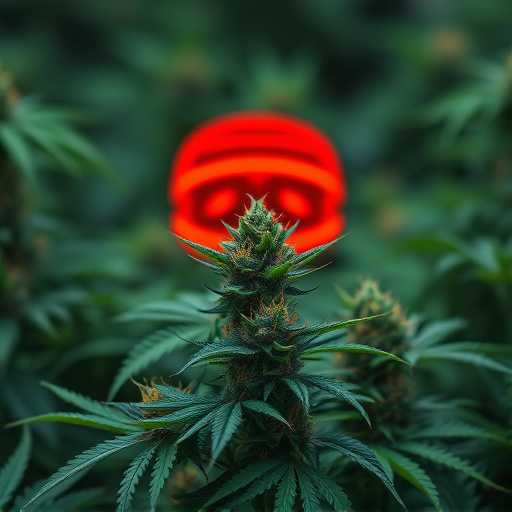
Vaporization and burning (smoking) are two distinct methods of consuming cannabis with different hea…….

Cannabis strains with varying THC and CBD levels provide distinct therapeutic benefits for migraine…….
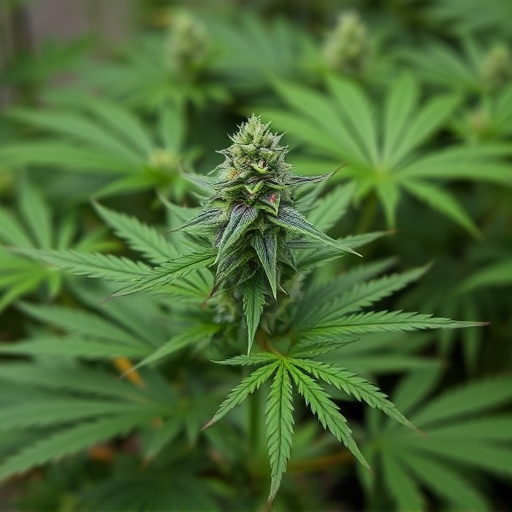
The color change in cannabis flowers, driven by chemical and hormonal shifts during late development…….
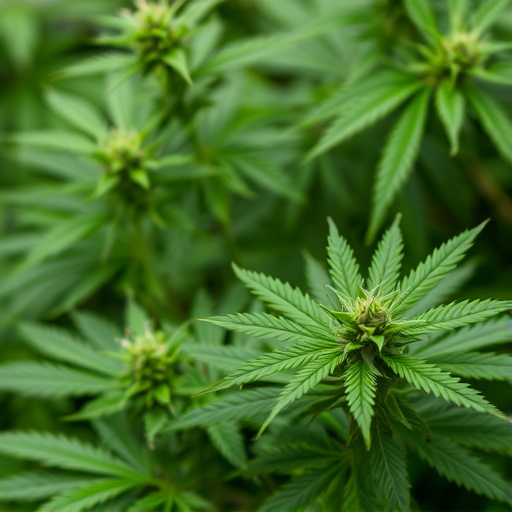
Cannabis offers diverse strains with unique terpene and cannabinoid profiles, making it a potential…….
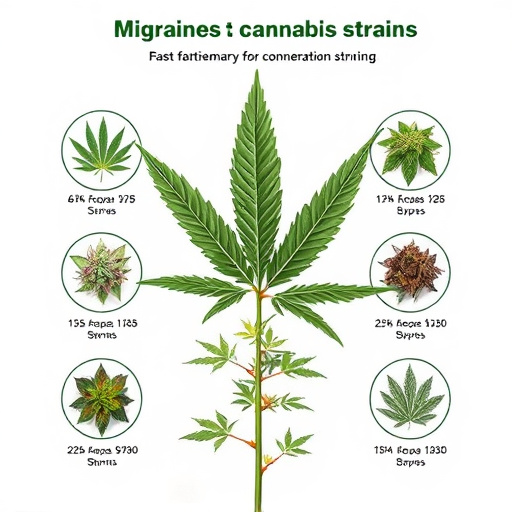
Sativa cannabis strains, known for their energizing effects, can be effective in alleviating migrain…….

Cannabis offers natural relief for migraines through specific strains targeting symptoms like stress…….

Cannabis, through compounds THC and CBD, stimulates appetite, aiding anorexia nervosa and cachexia……..
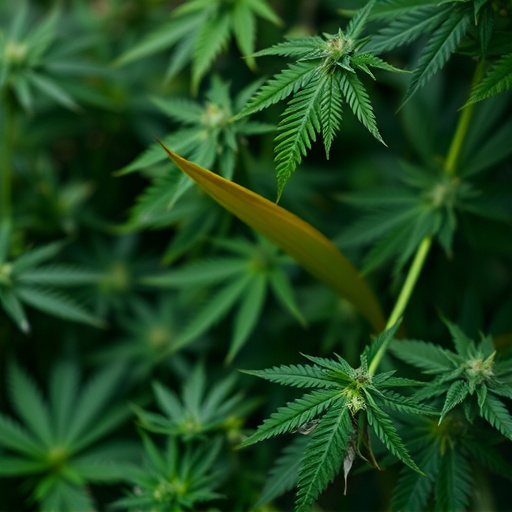
Cannabis, particularly rare strains with high CBD and specific terpene profiles, shows promise as a…….